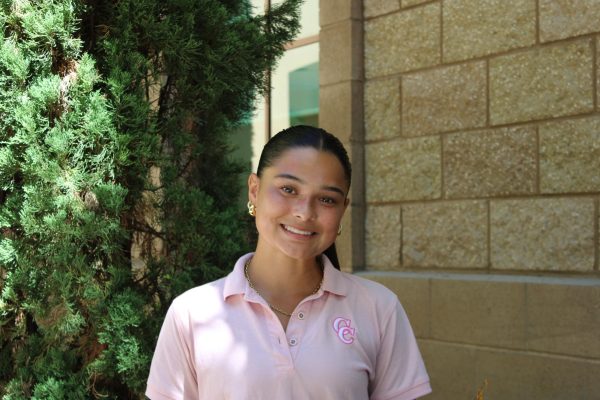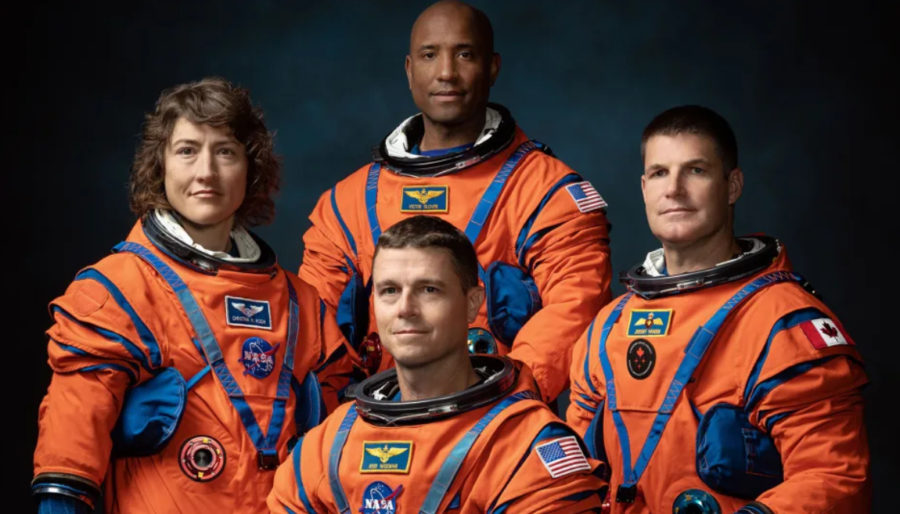NASA’s new mission to space
NASA is launching a new mission to the moon called Artemis II which is scheduled to launch in late 2024. Earlier this month, NASA announced the four astronauts that will be a part of the crew. The Artemis II mission is a ten day trip that will fly around the moon. Yet, this mission will not send the astronauts to the surface.
This mission is a part of a program named Artemis. Artemis I was the first mission of this new program. It lifted off this past November. It was an uncrewed mission that lasted 25 days. This mission will be the first one since Apollo 17 in 1972, more than fifty years ago.
If all goes well in this mission, NASA is planning on sending Artemis III to the surface of the moon. This mission will send the first human to the South Pole of the moon.
Artemis’ goal is to test new technology and equipment that will be used for future missions. One new big technological improvement NASA has made is the communication system that will allow the crew to report back more data and make it easier to send signals back to headquarters.
NASA also wants to focus on building a more politically sustainable lunar program and creating a more diverse crew. This way, NASA hopes to inspire the younger generation, who will be watching this mission unfold. Lastly, NASA wants to start having other countries participate in this program. Canada is a major contributor to this new program, with the help of many engineers and researchers. The program hopes to incorporate other countries that are willing to share their knowledge on space technology and research
The crew that NASA has chosen to send on Artemis II is very diverse. NASA will be sending the first women and first person of color to the moon. Vennasa Wyche, the director of NASA’s Johnson Space Center, wanted to focus on making a more diverse crew and shy away from having only white men on crew. Reid Wiseman, Victor Glover, Christina Hammock Koch, and Jeremy Hansen are the four astronauts a part of the Artemis II crew.
In a statement about the selection process of the Artemis II crew, Wyche states, “I can tell you, they still all have the right stuff,” Wyche said. “We have requirements different than we did (when we) just had test pilots”
The commander of the mission is Reid Wiseman. He is from Baltimore, Maryland. Wiseman graduated from John Hopkins University and later attended the US NAval Postgraduate School in California. He first started working at NASA in 2009. In 2014, he was the flight engineer aboard the International Space Station.
The pilot for Artemis II is Victor Glover. He has flown more than 3,000 hours in more than 40 different aircrafts. One of those times was flying for the Crew-1 mission, the first mission to use a SpaceX rocket. Glover started in the astronauts corp in 2013 and then later served as a flight engineer on the ISS.
The mission specialist for the crew is Christina Hammock Koch. She is also the only woman on the crew. She has spent over 300 days in space, which is more than any other woman. She has also participated in many spacewalks, when astronauts exit the spacecraft and float or hover in space with suits, and was a part of the first all women space walk. She has also previously worked at NASA’s Goddard Space Flight Center as an engineer by trade. If Artemis II is successful, Christina Hammock Koch will be the first woman to be sent to the moon.
Koch released a statement describing her excitement in being selected for the crew. “It’s an honor — not to get myself in the space — but because it’s amazing to be a part of this team that’s going back to the moon and on to Mars.”
The rookie of Artemis II is Canadian, Jermey Hansen. He has participated in many space simulations, such as NEEMO 19, which was a facility on the ocean floor to simulate space exploration. He was a part of the Royal Canadian Air Force and later, in 2009, was selected to the Canadian astronaut corps in 2009.
The crew is filled with very specialized and trained professionals. Just like the Apollo astronaut, three out of the four astronauts were originally military pilots. Two out of the four are also trained test pilots. Each member of the crew has different things to offer for this mission.
NASA hopes that with the new diverse crew and more developed technology, the future of space exploration will expand immensely. The crew will assist in the next generation of the NASA program. In addition, NASA hopes to inspire more of the youth with new faces of NASA.

Hi, I am Isabella Durazo and I am the Culture Beat Editor. I am very passionate about journalism and writing! I would like to make my passion...





















































